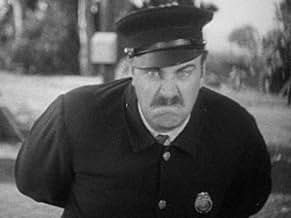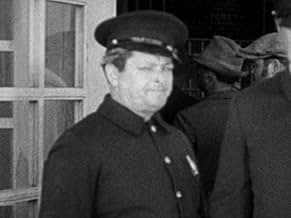Swept up in a police raid, Stan and Ollie are sentenced to jail and land in a jail labor camp. The governor visits, accompanied by two flappers, where the duo accidentally create rice puddin... Read allSwept up in a police raid, Stan and Ollie are sentenced to jail and land in a jail labor camp. The governor visits, accompanied by two flappers, where the duo accidentally create rice pudding for a food fight.Swept up in a police raid, Stan and Ollie are sentenced to jail and land in a jail labor camp. The governor visits, accompanied by two flappers, where the duo accidentally create rice pudding for a food fight.
- Prisoner
- (uncredited)
- Party Guest
- (uncredited)
- Party Guest
- (uncredited)
- Prisoner
- (uncredited)
- Prisoner
- (uncredited)
- Party Guest
- (uncredited)
- Prisoner
- (uncredited)
- Prisoner
- (uncredited)
- Prisoner
- (uncredited)
- Prisoner
- (uncredited)
- Governor
- (uncredited)
- Treetop Lookout
- (uncredited)
- Prisoner
- (uncredited)
- Prison Camp Officer
- (uncredited)
- Party Guest
- (uncredited)
- Prison Guard
- (uncredited)
Featured reviews
It doesn't take the Boys long to turn a visit from governor Jimmy Finlayson into absolute chaos, with a mud fight that recalls the pie-fight finale from BATTLE OF THE CENTURY. This doesn't add anything new to the franchise. It's simply a typically brilliantly executed series of fun.
The IMDb trivia for this short claims the song played at the start of this picture is "Ain't She Sweet." It's actually "That's My Weakness Now."
This is one of the first times I've seen where slapstick really works for Laurel and Hardy. The Hoose-Gow doesn't make much of an effort to incorporate a lot of verbal wit, and instead, emphasizes the physical elements. For some reason, perhaps the result of a mood-change or an unconscious desire, I was pleased by the slapstick here, especially during the scenes when Hardy is attempting to cut down a tree and Laurel keeps getting in the way, nearly missing the sharp blade of the pickaxe. Scenes like that provide for slapstick that almost seems improvisational rather than a copout for screen writing.
One can tell, however, this is an early sound-short because of the lack of formal dialog. The Hoose-Gow could've really been a silent short and simply had the timely luxury of being able to be produced with sound. My only assumption to the lack of real conversation was writers at the time, in this case, H.M. Walker, who wrote most of Laurel and Hardy's short films, was just getting used to screen writing with audible dialog, making the early sound-shorts lack the kind of leisurely- paced dialog that would be present in Laurel and Hardy's later shorts. It's not a particular flaw, just a difficultly in adapting on part of the short's crew, but it would've made for a more witty short.
Yet The Hoose-Gow accomplishes a feat I never really thought possible with Laurel and Hardy shorts, which is make them more slapstick driven than dialog driven and have them turn out successful. For that, the film deserves a huge plus, and the fact that this is the most active I've seen both men in any project only adheres to their credibility has fantastic physical performers.
Starring: Stan Laurel and Oliver Hardy. Directed by: James Parrot.
Any short film that needs a great deal of set up before it actually starts going anywhere, is asking for trouble. On the surface that may not totally be the case here but I suspect it is one of it's weaknesses. The plot here sounds good but it has a few little unnecessary things that are needed to get it to it's original idea (I assume) which is the prison gang.
Once it reaches this stage it is funny but never feels like it reaches a peak. Individual moments are good but it doesn't have any really good sequences I found the rice fight to be so-so rather than hilarious I'm afraid.
Laurel and Hardy are good of course but they seem to be hampered by a film that requires them to do things that aren't funny just to set up a joke that is funny. This split of time is almost 50/50 so the result is that the film doesn't seem to be as full and lively as their shorts are normally. Finlayson is usually my favourite support actor in the Laurel and Hardy shorts but here he doesn't get to do his trademark moves and is more of a straight man than a part of the comedy.
Overall this is still worth watching but I thought it was one of those rare occasions where the duo simply couldn't stretch the central idea to cover the whole short.
Did you know
- TriviaOliver Hardy was injured during the filming of the scene in which Stan Laurel keeps nicking him with a pickaxe. A rubber pickaxe was originally to have been used for the scene, but it was decided that it looked too fake, in action, so a real one was substituted. Hardy moved a little too close to Laurel during the latter's backswing and received a very real cut from the pickaxe on his rear.
- GoofsAt the end of the film the car backs into the truck, just before the impact two barrels of whitewash tip over.
- Quotes
Title Card: Neither Mr. Laurel nor Mr. Hardy had any thoughts of doing wrong - As a matter of fact, they had no thoughts of any kind
- Alternate versionsThere is also a colorized version.
- ConnectionsFeatured in The Crazy World of Laurel and Hardy (1966)
Details
- Release date
- Country of origin
- Official site
- Language
- Also known as
- The Hoose-Gow
- Filming locations
- Production company
- See more company credits at IMDbPro
- Runtime
- 21m
- Color
- Sound mix



































